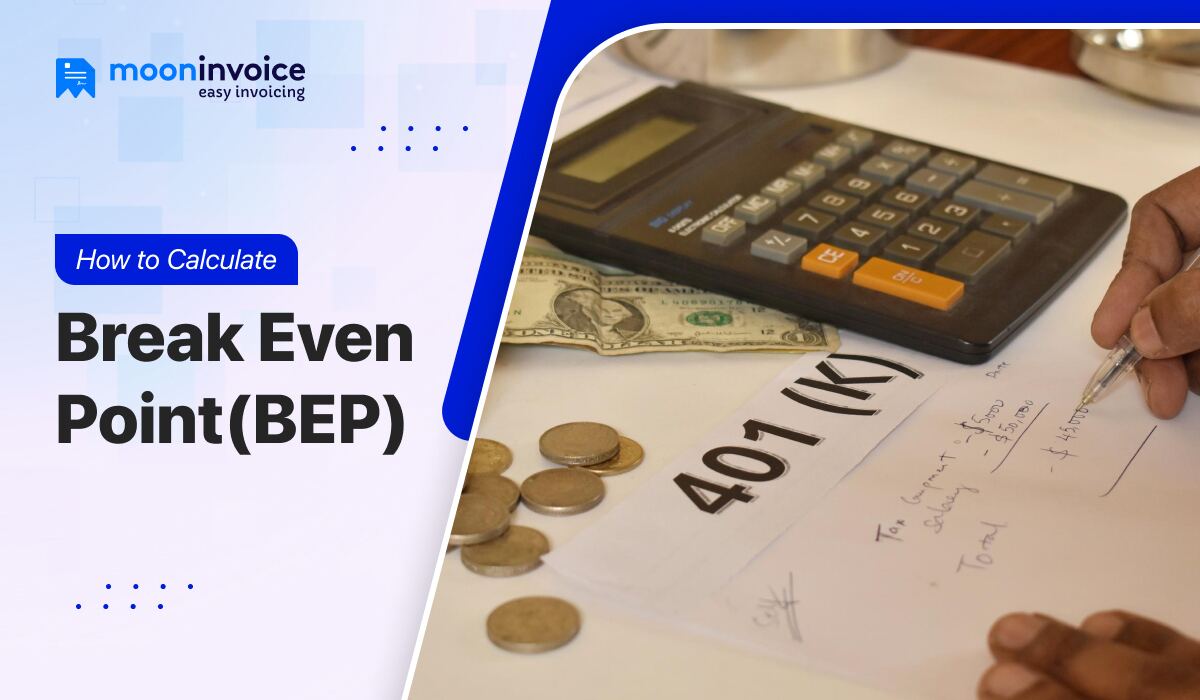Definition of Break Even Point
Break even point is the stage at which your business has covered all expenses and is ready to start making a profit.
Nowadays, entering the world of startups might be easy, but ensuring business sustainability in a competitive market requires continuous effort, as you need to adapt to changing trends. It relies on how good you are at establishing business strategies and managing the cash flow.
If you fail to tackle the cash problems, you may not be able to reach the break even point(BEP). Even worse, it may lead to startup failure in case you continue to deal with cash problems for a long time. In recent years, 16% of startups have failed while facing similar financial problems.
Here, failing to calculate break even point is like diving into deep waters without even knowing how to swim. Which means your business could drown in a sea of financial instability.
However, it won’t happen as long as you know what is a breakeven point, break even point formula, and how to calculate break even point. So, let’s find out.
What is a Break-Even Point(BEP)?
The break-even point(BEP) is a stage where your company’s expenses are equal to your total revenue. It is an inflection point from which your company starts making a profit. It signifies that you have reached the level where production costs and revenues are equivalent to each other.
Break-even point holds significance in every business because it shows how soon they will make a profit and what improvements are required in the selling process.
Businesses get an idea of whether to revise their pricing plans in order to achieve high sales. As soon as you breach the break even point, rest assured, you are running a profitable business.
Fed Up with Managing Finances on Spreadsheets?
Centralize your business finances in one place and generate high-quality reports within seconds.
How to Calculate Your Break Even Point
Breakeven calculation is simple as long as you know the right formula and have the necessary details handy. To calculate the break even point, first get fixed costs and contribution margin, i.e., how much you make from selling products after deducting variable expenses. Once you have both, use the below formula.
Break Even Point Formula
Break-Even Point (BEP) = Fixed Costs / Contribution Margin

How to Calculate Break Even Point in Units
Calculating the break-even point in units is all about figuring out how many products you still need to sell in order to start earning a profit. What you need is to get the fixed costs and divide it by the selling price of the product minus the variable expense per unit.
Here, the fixed costs are the money your business incurred regardless of sold products, and variable costs are more or less charges that you pay for materials used in production.
Here is the break-even point formula (in units):
Fixed costs / (price per unit – Variable expense per unit) = Break-even point in units
How to Find Break Even Point in Sales Dollars
In case you wish to find a break even point in sales dollars, here’s how.
Identify the contribution margin before using this formula to evaluate BEP in sales dollars. Also, take the selling price of the product minus variable expenses to find the contribution margin. Below is the formula of contribution margin that you might need at this point.
Sales Price – Variable Costs = Contribution Margin
Once you know the contribution margin, apply it to the below break-even formula to identify the exact BEP in sales dollars.
Break-even point formula to calculate in sales dollars:
Fixed Costs / Contribution Margin = Break-even point in Sales Dollars
Break-even analysis is not only crucial for entrepreneurs but also for those who have already been running a business for a while. Let us take a look at examples to understand the break-even point in detail.
Break-even Point Examples
Let’s assume you are planning to start an eatery in California, US, where you want to sell grilled cheese sandwiches. Before opening the doors, you want to know financial projections to identify if selling sandwiches can really help you make money.
At this point, use the break-even point formula (units or sales dollars) to learn if your idea is worth an investment. Assuming you want to sell only grilled cheese sandwiches, here are the financial projections: business expenses and the selling price of your food item on a monthly basis.
- Fixed Costs: $1000
- Variable expenses: $2 (per unit)
- Sales price: $10 (one sandwich)
Break-Even Point in Units
Fixed Costs ÷ (Sales price – Variable expenses) = break-even point
$1000/($10 – $2) = 125 Sandwiches
This means you need to sell at least 125 grilled cheese sandwiches during one month to meet the break-even point.
Break-Even Point in Sales Dollars
Fixed Costs ÷ Contribution Margin = Break-Even Point in Sales Dollars
$1000/$0.8 = 1250 (BEP in Sales Dollars)
Here, the total contribution margin at the break-even point is 0.8. As a result, your company must sell sandwiches amounting to $1250 to achieve a break-even point. Once the target is achieved, your company will start earning profit.
Why Break-Even Analysis Is Important?
So, now you know how to calculate the break even point, but do you know why breakeven analysis matters? Let us explain to you.
1. Identifying Risk Factors
Breakeven calculations can aid you in determining whether your startup idea is worth an investment. You can do quick calculations and find out if you can really achieve your business goals before you get off the ground.
2. Financial Projections
If you are already operating your own business, break even point significantly contributes to identifying how soon you can run a profitable business. You can get an idea of how much more sales you need in order to achieve business profitability.
3. Pricing Strategies
Businesses often rely on the break-even point when it comes to setting new pricing plans or revising the pricing strategy. They analyze a break even point to know the exact sales required to make a business profit, and accordingly set the product prices.
4. Drawing Investors
Businesses also prefer doing break even point analysis to attract foreign investors. Break even point helps them in learning how good the chances are of higher ROI, which ultimately delights the investors.
Do No More Paperwork with Moon Invoice
Use Moon Invoice to automate your accounting tasks and achieve desired revenue in less time.
Conclusion
The break-even point, in a nutshell, is not a one-time process but a thing that needs to be calculated on a regular basis. Especially if you are focusing on business growth, it needs to be monitored frequently to gauge profitability. It aids you in taking the necessary steps to improve product sales and ultimately achieve desired cash flows.
Notably, when your business grows, you might see major ups and downs in business expenses and revenue output. Consequently, not only will the break-even point change, but it will also be difficult to manage expenses unless you have invoicing software.
Invoicing software like Moon Invoice greatly tackles the hassle of performing administrative tasks. You can easily manage business expenses, invoices, and receipts, no matter how big your sales figure is.
The cloud-based accounting software eliminates any chance of paper misplacement by providing an online invoicing process. Get your free trial today to explore more.



















